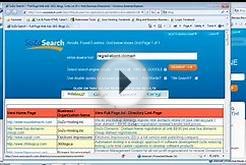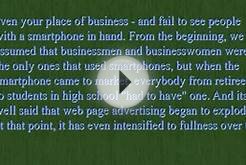 If you’re an average reader, I’ve got your attention for 15 seconds, so here goes: We are getting a lot wrong about the web these days. We confuse what people have clicked on for what they’ve read. We mistake sharing for reading. We race towards new trends like native advertising without fixing what was wrong with the old ones and make the same mistakes all over again.
If you’re an average reader, I’ve got your attention for 15 seconds, so here goes: We are getting a lot wrong about the web these days. We confuse what people have clicked on for what they’ve read. We mistake sharing for reading. We race towards new trends like native advertising without fixing what was wrong with the old ones and make the same mistakes all over again.
Not an average reader? Maybe you’ll give me more than 15 seconds then. As the CEO of Chartbeat, my job is to work with the people who create content online (like Time.com) and provide them with real-time data to better understand their readers. I’ve come to think that many people have got how things work online quite mixed up.
Here’s where we started to go wrong: In 1994, a former direct mail marketer called Ken McCarthy came up with the clickthrough as the measure of ad performance on the web. From that moment on, the click became the defining action of advertising on the web. The click’s natural dominance built huge companies like Google and promised a whole new world for advertising where ads could be directly tied to consumer action.
However, the click had some unfortunate side effects. It flooded the web with spam, linkbait, painful design and tricks that treated users like lab rats. Where TV asked for your undivided attention, the web didn’t care as long as you went click, click, click.
In 20 years, everything else about the web has been transformed, but the click remains unchanged, we live on the click web. But something is happening to the click web. Spurred by new technology and plummeting click-through rates, what happens between the clicks is becoming increasingly important and the media world is scrambling to adapt. Sites like the New York Times are redesigning themselves in ways that place less emphasis on the all-powerful click. New upstarts like Medium and Upworthy are eschewing pageviews and clicks in favor of developing their own attention-focused metrics. Native advertising, advertising designed to hold your attention rather than simply gain an impression, is growing at an incredible pace.
It’s no longer just your clicks they want, it’s your time and attention. Welcome to the Attention Web.
At the core of the Attention Web are powerful new methods of capturing data that can give media sites and advertisers a second-by-second, pixel-by-pixel view of user behavior. If the click is the turnstile outside a stadium, these new methods are the TV control room with access to a thousand different angles. The data these methods capture provide a new window into behavior on the web and suggests that much of the facts we’ve taken for granted just ain’t true.
Myth 1: We read what we’ve clicked on
For 20 years, publishers have been chasing pageviews, the metric that counts the number of times people load a web page. The more pageviews a site gets, the more people are reading, the more successful the site. Or so we thought. Chartbeat looked at deep user behavior across 2 billion visits across the web over the course of a month and found that most people who click don’t read. In fact, a stunning 55% spent fewer than 15 seconds actively on a page. The stats get a little better if you filter purely for article pages, but even then one in every three visitors spend less than 15 seconds reading articles they land on. The media world is currently in a frenzy about click fraud, they should be even more worried about the large percentage of the audience who aren’t reading what they think they’re reading.
The data gets even more interesting when you dig in a little. Editors pride themselves on knowing exactly what topics can consistently get someone to click through and read an article. They are the evergreen pageview boosters that editors can pull out at the end of the quarter to make their traffic goals. But by assuming all traffic is created equal, editors are missing an opportunity to build a real audience for their content.
Our data team looked at topics across a random sample of 2 billion pageviews generated by 580, 000 articles on 2000 sites. We pulled out the most clicked-on topics and then contrasted topics that received a very high level of attention per pageview with those that received very little attention per pageview. Articles that were clicked on and engaged with tended to be actual news. In August, the best performers were Obamacare, Edward Snowden, Syria and George Zimmerman, while in January the debates around Woody Allen and Richard Sherman dominated.









